Wood flooring is more than just a functional aspect of a room; it's a design statement that sets the tone for the entire space.
As well as the species, color and finish of the wood flooring you select, the pattern you specify has a huge role to play in the visual appearance of that floor and how well it resonates with other aspects of interior design. Different flooring patterns can influence the look and feel of the wood, add character or a sense of history, and even play around with the perceived dimensions of a space.
In this blog, we’ll delve into some of the most popular wood flooring patterns – from brick and herringbone to chevron, parquet, and more – to help you understand the different options available and how they might impact your next interior design project.
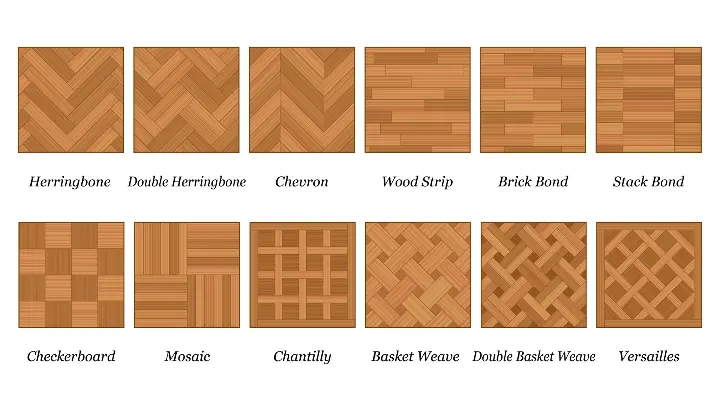
What are the most common wood flooring patterns?
There are many different options for wood flooring patterns, with the most common being random length, herringbone, chevron and parquet (which has a few different styles in itself). Each of these patterns has distinctive visual characteristics that make them suitable for a particular style of interior, as well as practical pros and cons that may influence the design you choose. Let’s take a closer look…
Random Length Pattern: Classic and Versatile
Random length wood floors (also sometimes known as staggered or running bond floors) are the most commonly laid and also one of the most traditional, simple options. This pattern involves laying floorboards of differing lengths in a random, offset pattern, mimicking traditional flooring techniques and creating a relaxed, authentic look. By choosing a wood floor with random width planks as well as random lengths, you can add further texture and interest to the floor.
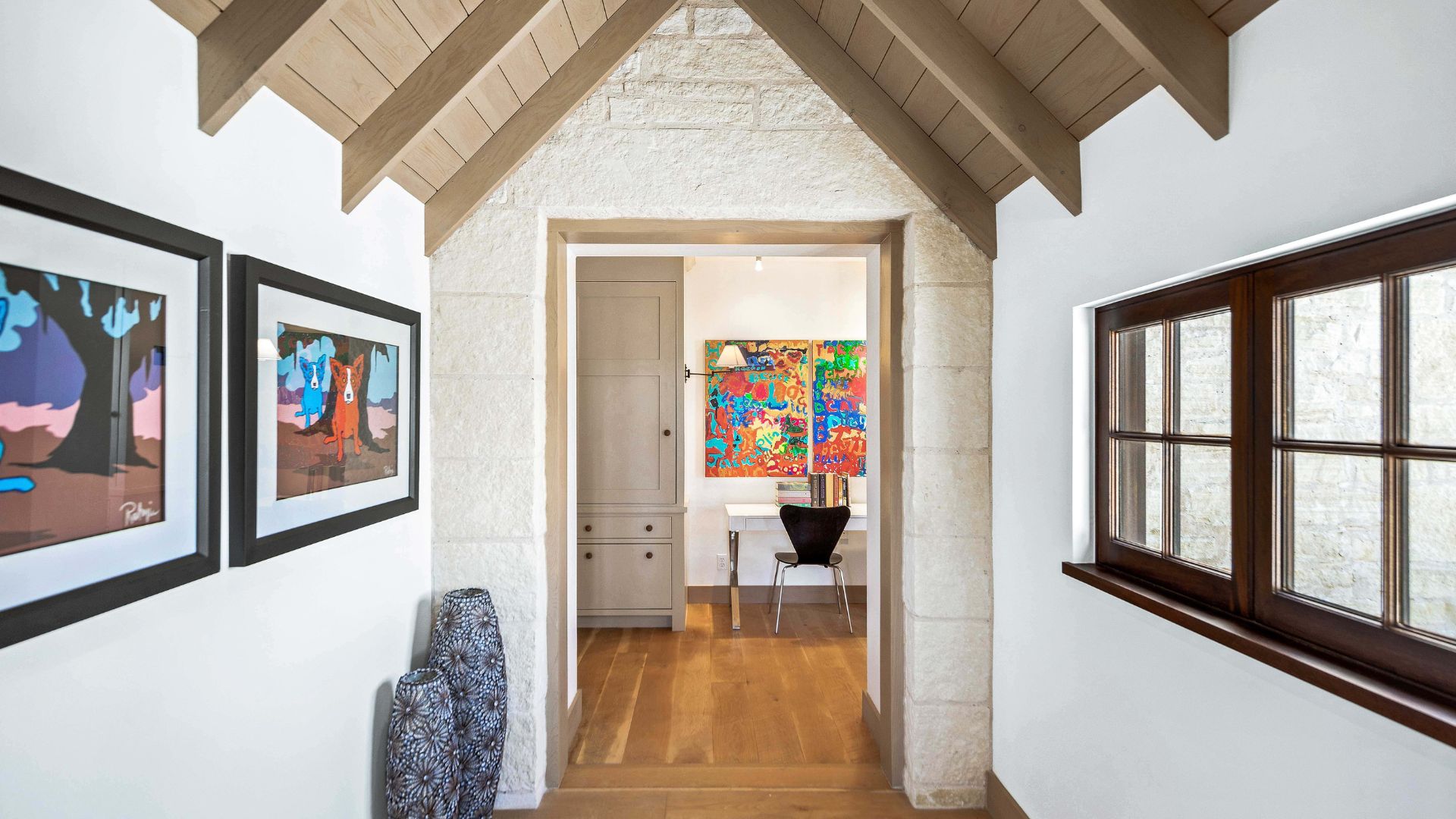
Classic random length flooring leading to a custom octagonal pattern
The random length pattern is simple and understated, allowing the natural wood grain to stand out subtly without overwhelming the space. It works particularly well with random width planks, showcasing the unique textures and colors of the wood.
Which interiors suit a random length wood floor?
Random length floors are highly versatile, making them suitable for a wide range of interior styles, from modern and minimalist to traditional and rustic. Their simplicity makes them a great foil for bolder design elements in the room.
Pros of specifying a random length floor are ease of installation, versatility, and cost-effectiveness due to minimal need for cutting planks, and therefore less waste.
A drawback of specifying a random length floor is the sheer simplicity – they may appear too plain or generic in high-end or statement spaces, or lack the visual interest of more complex patterns.

Herringbone Pattern: Timeless Elegance
The herringbone pattern is a classic design that dates back to ancient Roman times. It involves laying rectangular planks in a zigzag pattern, with each plank meeting at a 90-degree angle. This creates a visually striking and dynamic effect.
Herringbone emphasizes the natural variations in wood grain, adding depth and texture to the floor. The angled layout enhances the play of light and shadow, giving the floor a lively yet sophisticated appearance.
Which interiors suit a herringbone floor?
Herringbone is ideal for elegant, classic interiors, such as those found in heritage-grade homes, but it also adapts well to sophisticated, modern spaces, especially when the pattern is exaggerated with longer plank lengths. It works particularly well in grand entrance halls, dining rooms, and living spaces where you want to make a strong visual impact.
Advantages of herringbone floors are their ability to add a sense of luxury and timelessness to a space, as well as their ability to enhance the appearance of the natural wood grain. Their closely textured appearance works well in both large and small spaces – however, they are more complex and time-consuming to install due to the amount of cutting required, and as such can incur higher labor costs and more waste.
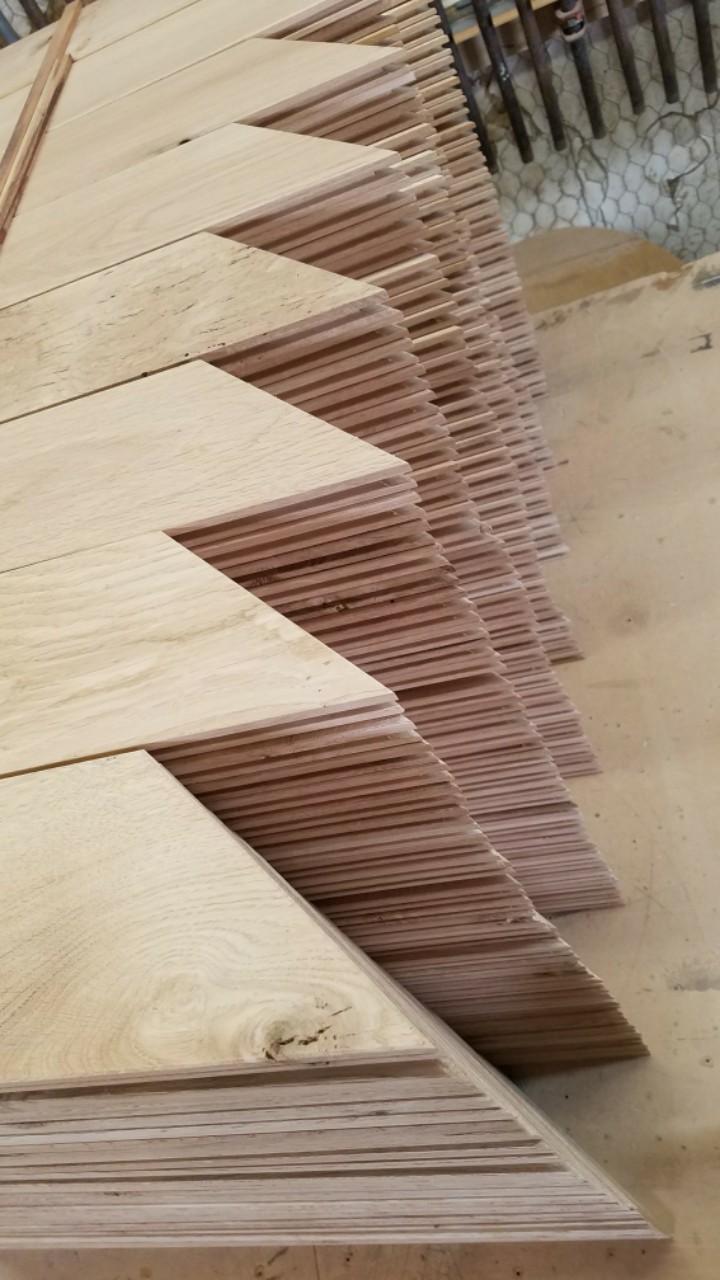
Chevron Flooring in our factory
Chevron Pattern: Sleek and Modern
Chevron floors are similar to herringbone but with a key difference: the ends of the planks are cut at an angle (usually 45 degrees) to create a continuous V shape. This results in a clean, symmetrical look with sharp lines.
Chevron floors also typically use longer plank sections than herringbone floors, creating a more streamlined and modern appearance, with the V shapes directing the eye and creating a sense of movement across the room. It can enhance the elegance of the wood grain by focusing attention on the precise, linear forms.
Which interiors suit a chevron floor?
Chevron is a favorite in contemporary and modern interiors where clean lines and bold, graphic elements are desired. It’s perfect for sleek urban apartments, high-end offices, and chic retail spaces.
Chevron flooring’s strong points are its ability to create a bold, modern look with a strong sense of direction that accentuates the natural beauty of the wood grain, while being suitable for various room sizes. However, its dramatic pattern can sometimes be visually overwhelming in very large spaces, and can even create an optical illusion that the floor is uneven! Installation of chevron flooring is complex and requires skilled workmanship to ensure a precise finish.
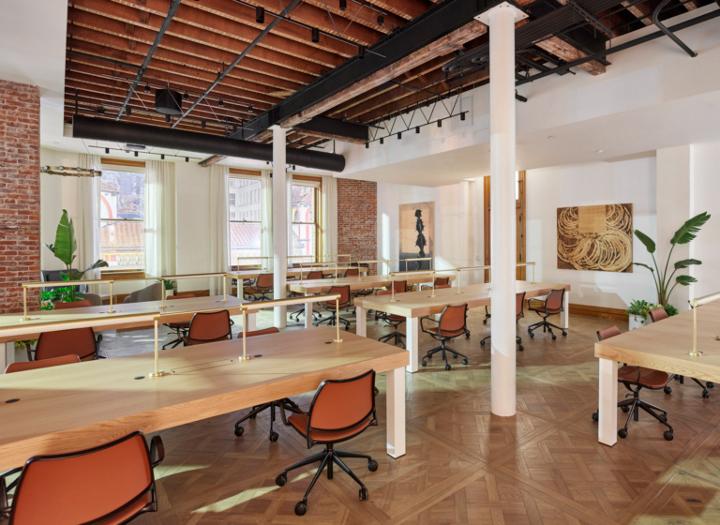
Parquet Pattern: Intricate and Customizable
Parquet flooring consists of small wood pieces arranged in intricate, geometric patterns. It originated in France during the 16th century, gaining prominence in the grand châteaux and palaces of Europe. The term ‘parquet’ itself comes from the French word ‘parqueterie’, which refers to the art of creating intricate wooden mosaics. One of the most famous examples of early parquetry is found in the Palace of Versailles, where the elaborate parquet de Versailles pattern - characterized by interlocking diagonal squares - was laid in the late 17th century under the reign of Louis XIV.
Common parquet patterns include basket weave, hexagon, and the classic Versailles pattern, but more modern iterations also exist and can be custom designed to meet the needs of a specific project – see our work on the Museum of Modern Art in New York.
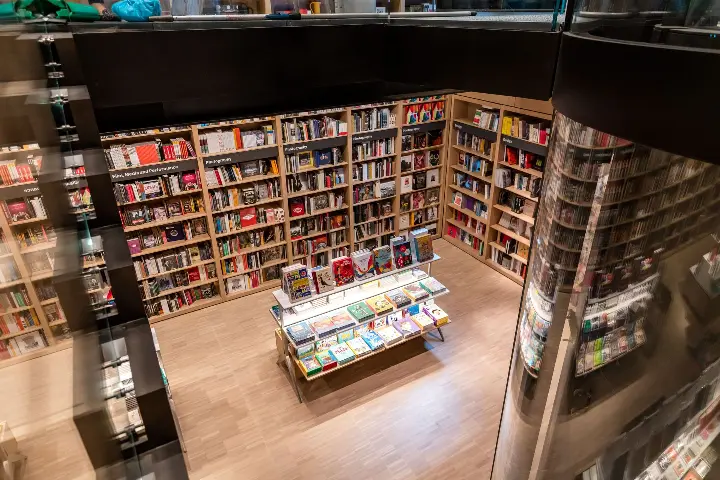 Fingerstrip parquet flooring at MoMA
Fingerstrip parquet flooring at MoMA
Parquet patterns highlight the wood grain in unique ways, often creating a mosaic-like effect that draws the eye. The intricate designs can be tailored to enhance the wood's natural colors and textures, making the floor a central feature of the room.
Which interiors suit a parquet floor?
Parquet is often associated with historic, luxury interiors, such as grand European homes or opulent public buildings. However, it can also be adapted for modern spaces where a touch of artistry is desired. It’s ideal for formal spaces like dining rooms, libraries, and ballrooms.
Parquet floors are loved for their artistry and uniqueness, but they are also one of the most expensive flooring options due to the complexity of installation. They also require meticulous maintenance to preserve their intricate designs.
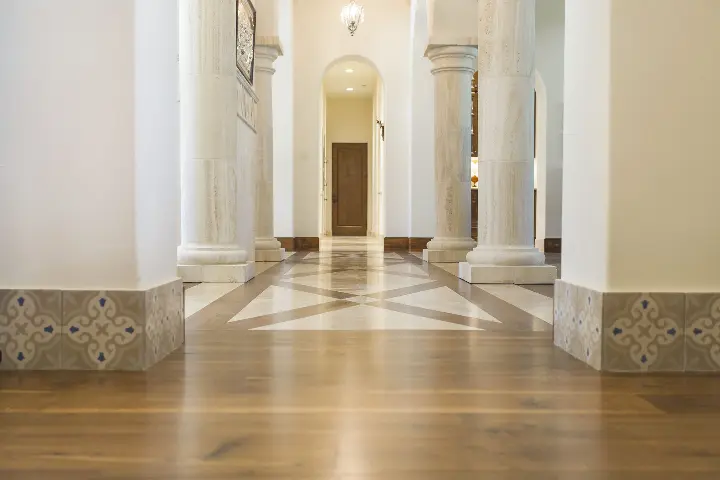
A custom wood floor integrated with tile
Other Patterns: End Grain, Diagonal, and Custom Patterns
Beyond the most common flooring patterns, there are several other options to explore, such as end grain floors, typically composed of wood block cut from the end of a square or even round piece of lumber, diagonal patterns, where the floor is laid in a running bond at a 45-degree angle to the perimeter of the room, and completely custom patterns which are created using computer-aided design and bespoke manufactured.
Specifying an unusual flooring pattern is a fantastic way to add character and uniqueness to any space – we’ve supplied end grain flooring for space like restaurants, wine cellars and even a childrens’ play area. Diagonal patterns can make small space appear larger, or lead the eye towards a focal point, while a custom wood floor pattern can be the ideal way to make a bold statement in an entrance hall or lobby. Whichever pattern you choose, however, it’s important to understand the practicalities of installation so you don’t run into unexpected labor or material costs.
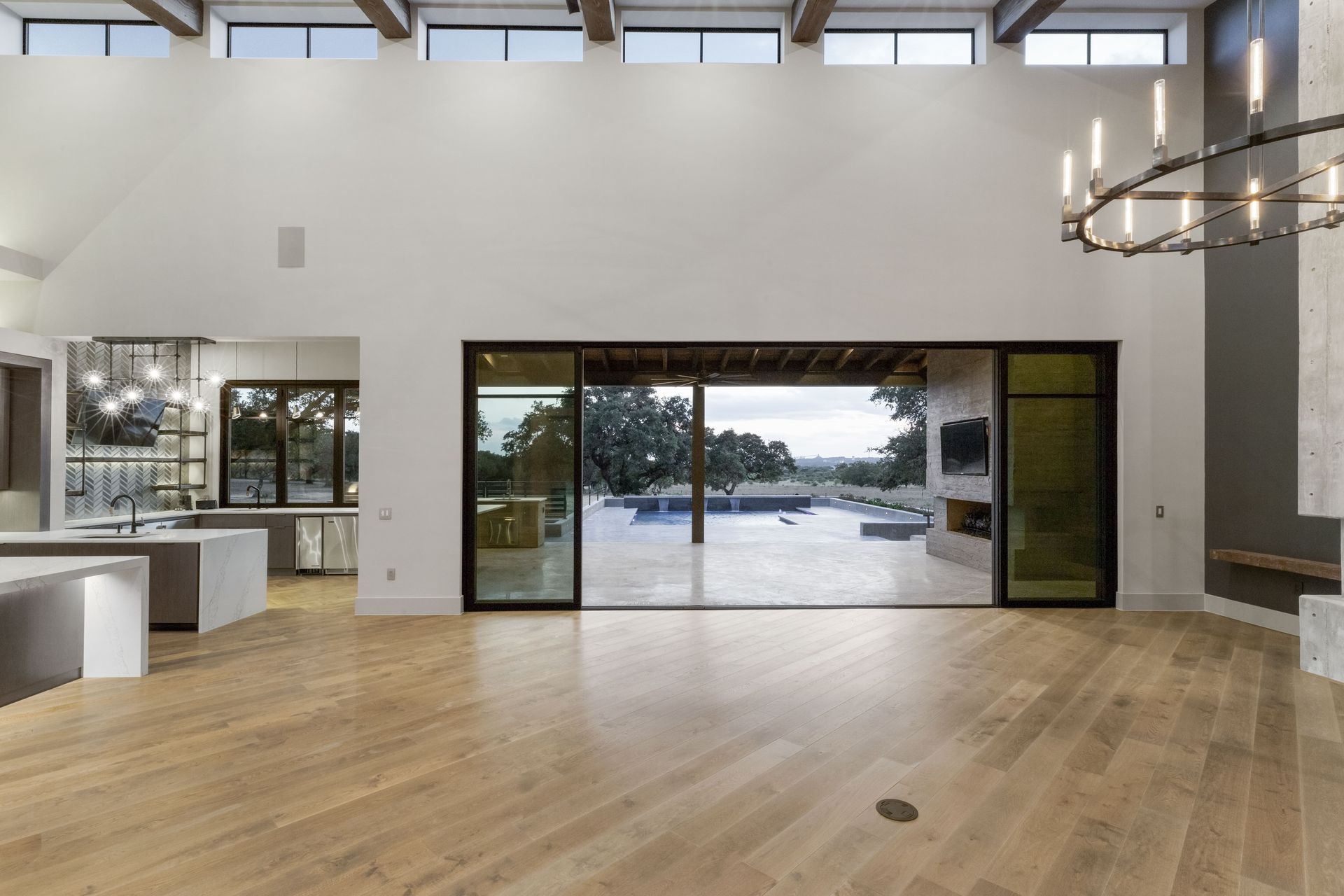
Expert design guidance from WoodCo
Choosing the right wood flooring pattern is a crucial decision that impacts the overall aesthetic and functionality of your space. As well as the various patterns explored in this blog, it’s important to understand whether or not your preferred wood species is suitable for that pattern – for instance, softwood floors are typically not suitable for more intricate flooring patterns.
If you have a specific project coming up and you’d like to discuss the options, or get a quote, simply contact our knowledgeable team, or visit your nearest WoodCo dealer.